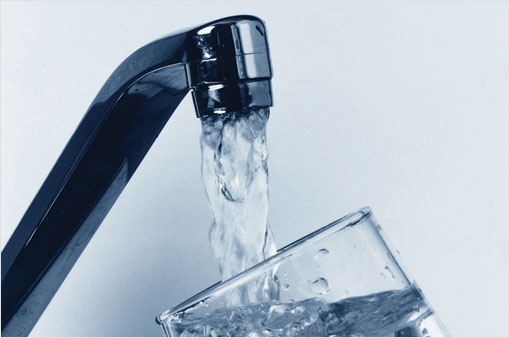Lead in Your School: What You Need to Know

Courtesy nyc.gov
You may have heard the results of a recent water safety inspection that found a multitude of Albany High School fountains, sinks, and showers full of unsafe amounts of lead. But to what extent is this hazardous, and how is it being dealt with?
According to the Environmental Protection Agency (EPA) and the Center for Disease Control (CDC), the maximum amount of lead that is still safe for children and pregnant women is 15 parts per billion, or ppb. This means that for every billion units of mass, there may be no more than 15 units of lead, a very small fraction that is nevertheless important because we know that lead is very bad for the human body in larger quantities and can cause developmental delays and impairment in cognition and function. This caused Governor Andrew Cuomo to sign a law in September 2016 that all public schools must be tested for lead in all water outlets, closing the unsafe water sources until they may be fixed.
The study was conducted across the City School District of Albany during September and October of 2016 and it quickly became apparent that there is a serious problem. At Albany High and the Abrookin Career and Technical Center, 54 of the 261 outlets tested above 15 ppb, and 35 of the 54 outlets tested above 40 ppb, the threshold at which the EPA declares an “imminent and substantial endangerment” to the person using the water outlet. Most of these outlets, thankfully, were not being used for drinking; they included never-used showers in the locker rooms and pool area, as well as the lab sinks for science classrooms on the third floor.
Four outlets tested above 1,000 ppb, which means that there’s one lead particle for every million particles of matter, an abnormally high level that could be mistaken for those in Flint, Michigan. One outlet, identified as “girl’s locker room shower G”, tested at 2,210 ppb, one hundred and forty seven times higher than the safe level. Picture it this way: if one “safe dose” of 15 ppb was a 1.2-meter emperor penguin, and you stacked all those safe-dose emperor penguins on top of each other, they’d be as tall as the Corning Tower.
Penguin stacking aside, this is a serious problem that needs to be addressed. Obviously, the school shut down the hazardous sources and sent notifications to the parents and students at afflicted schools, but they took “immediate action” to warn the NYS Department of Health and to start repairing the outlets. Meanwhile, The City School District has put on their website a warning on how to recognize and prevent lead poisoning. ACSD’s last testing was in 2007, where they found 32 issues in the entire district, meaning that this instance is much worse than ever before.
If you really want to open a water tap at Albany High but have qualms about possible lead levels, turn on the cold water; according to the EPA, it’s less likely to have elevated levels of lead. Honestly, though, the damage 15 ppbs can do to you is minimal to none; you’re probably very safe enjoying a drink every once in a while.

